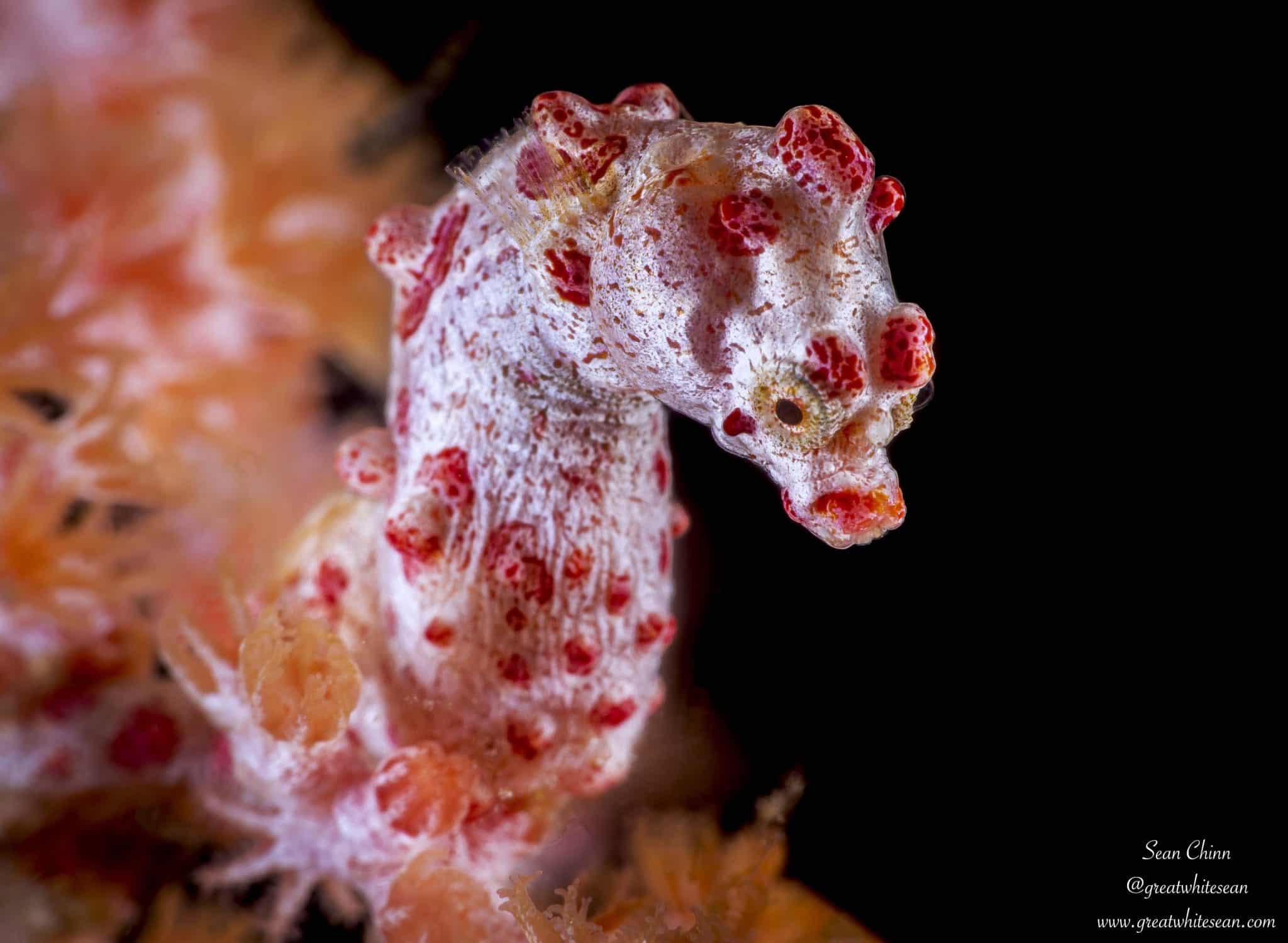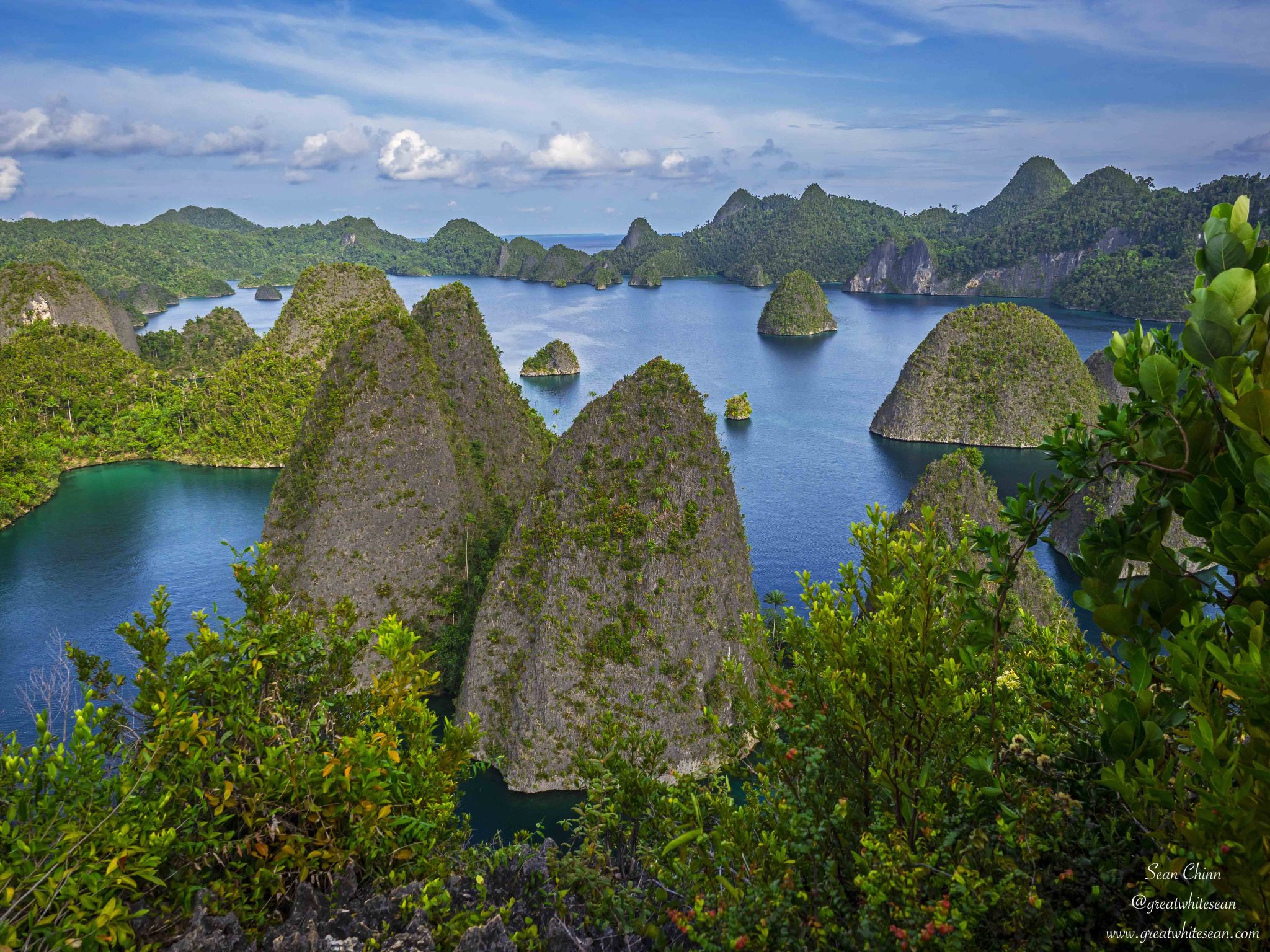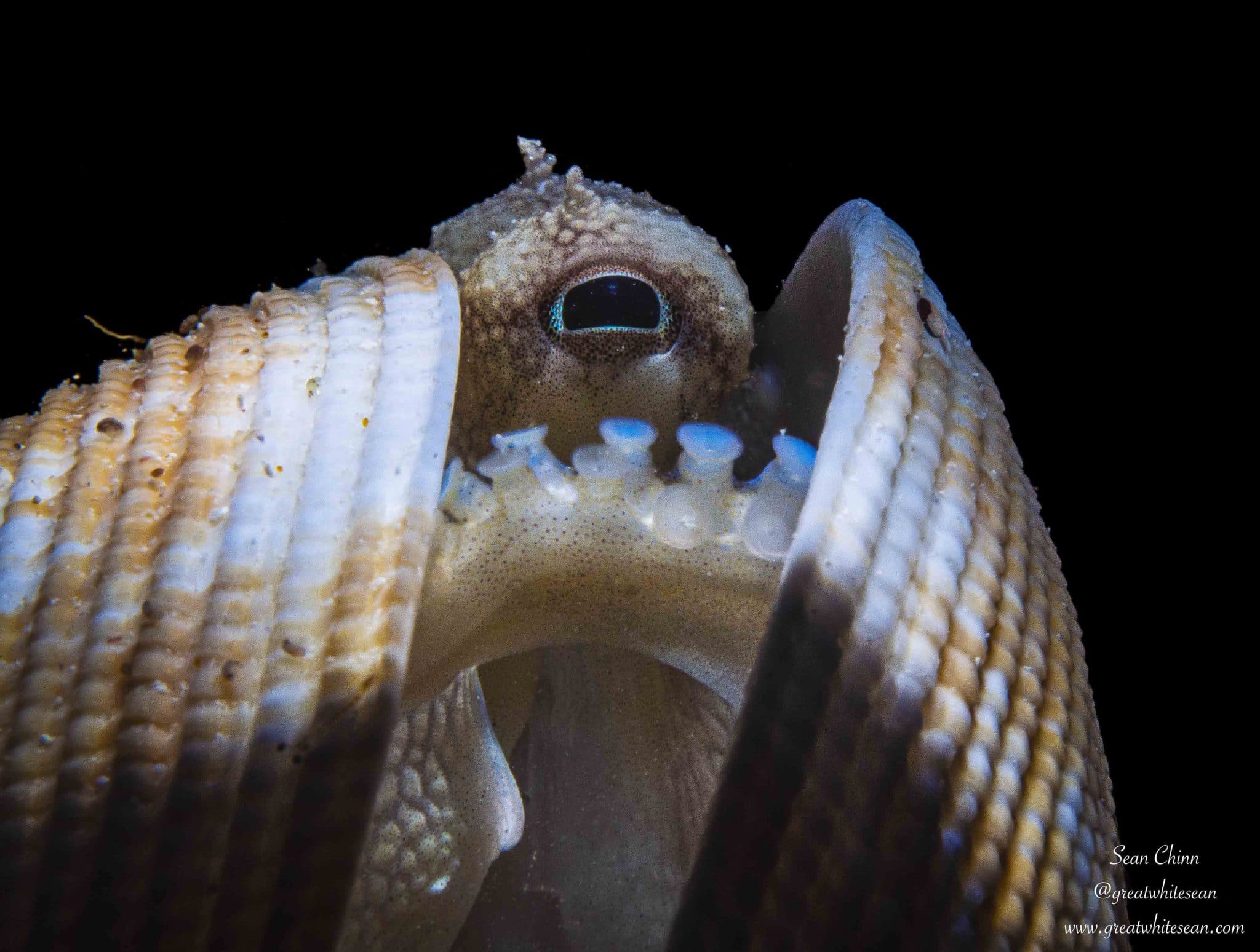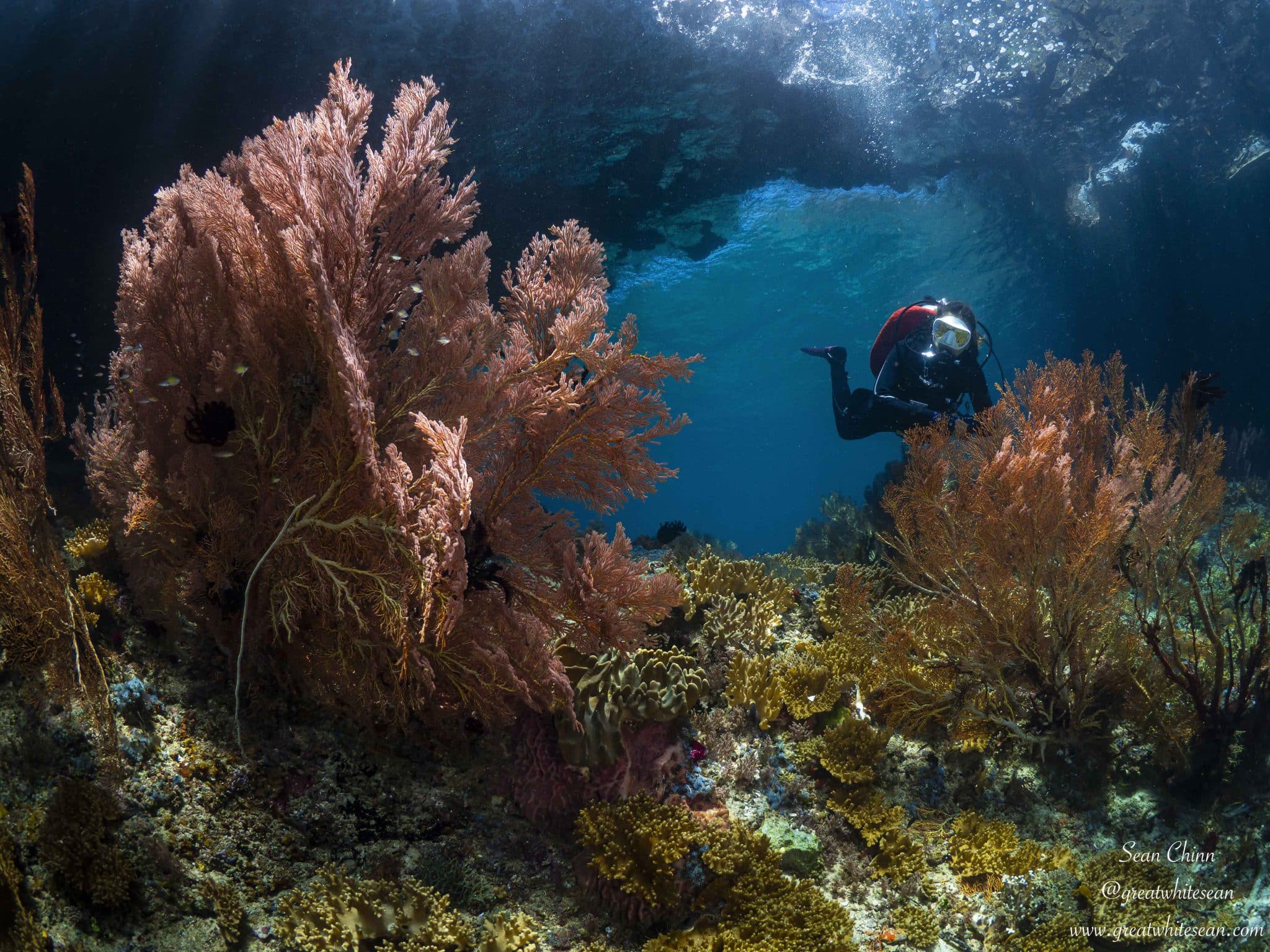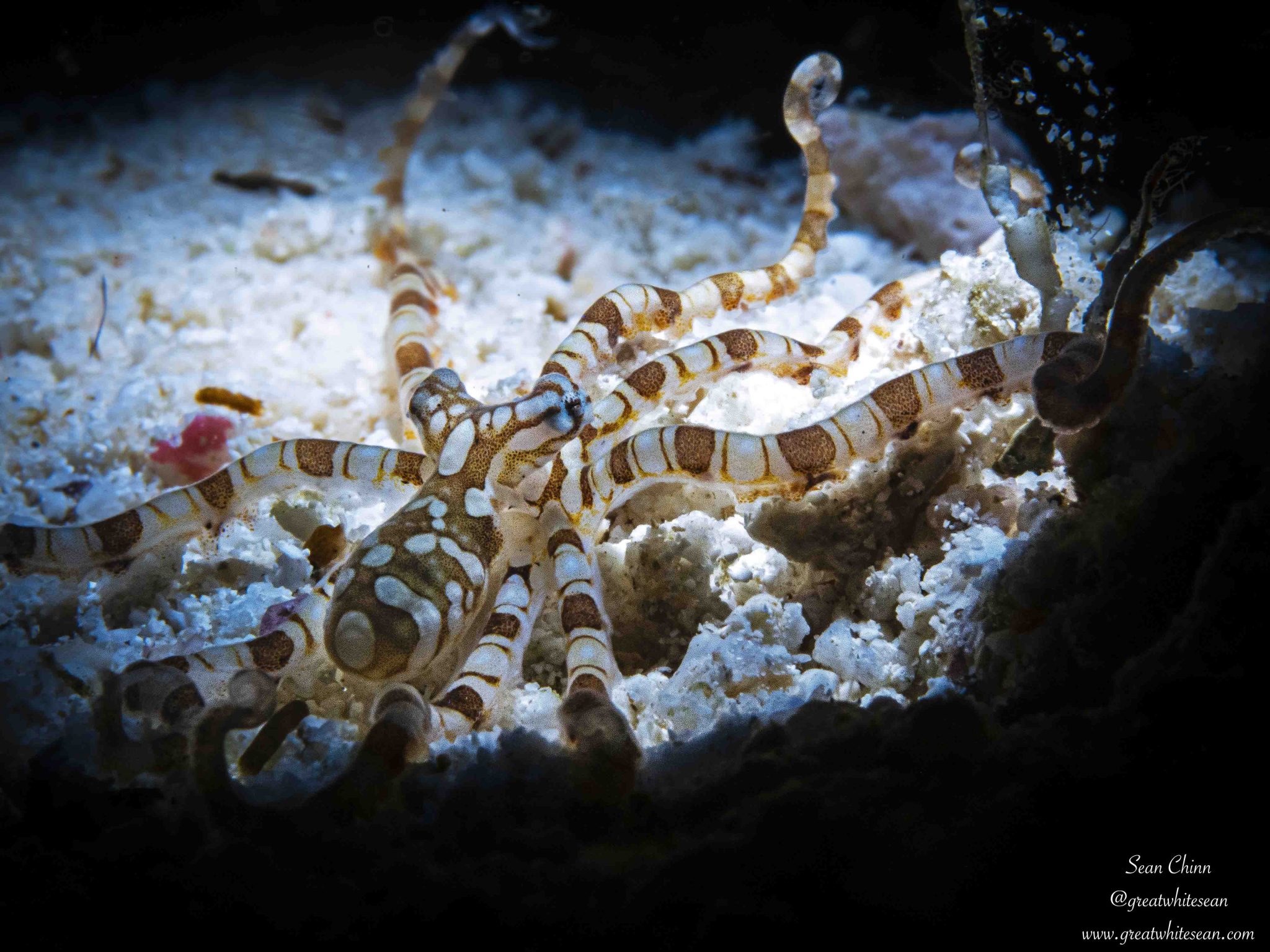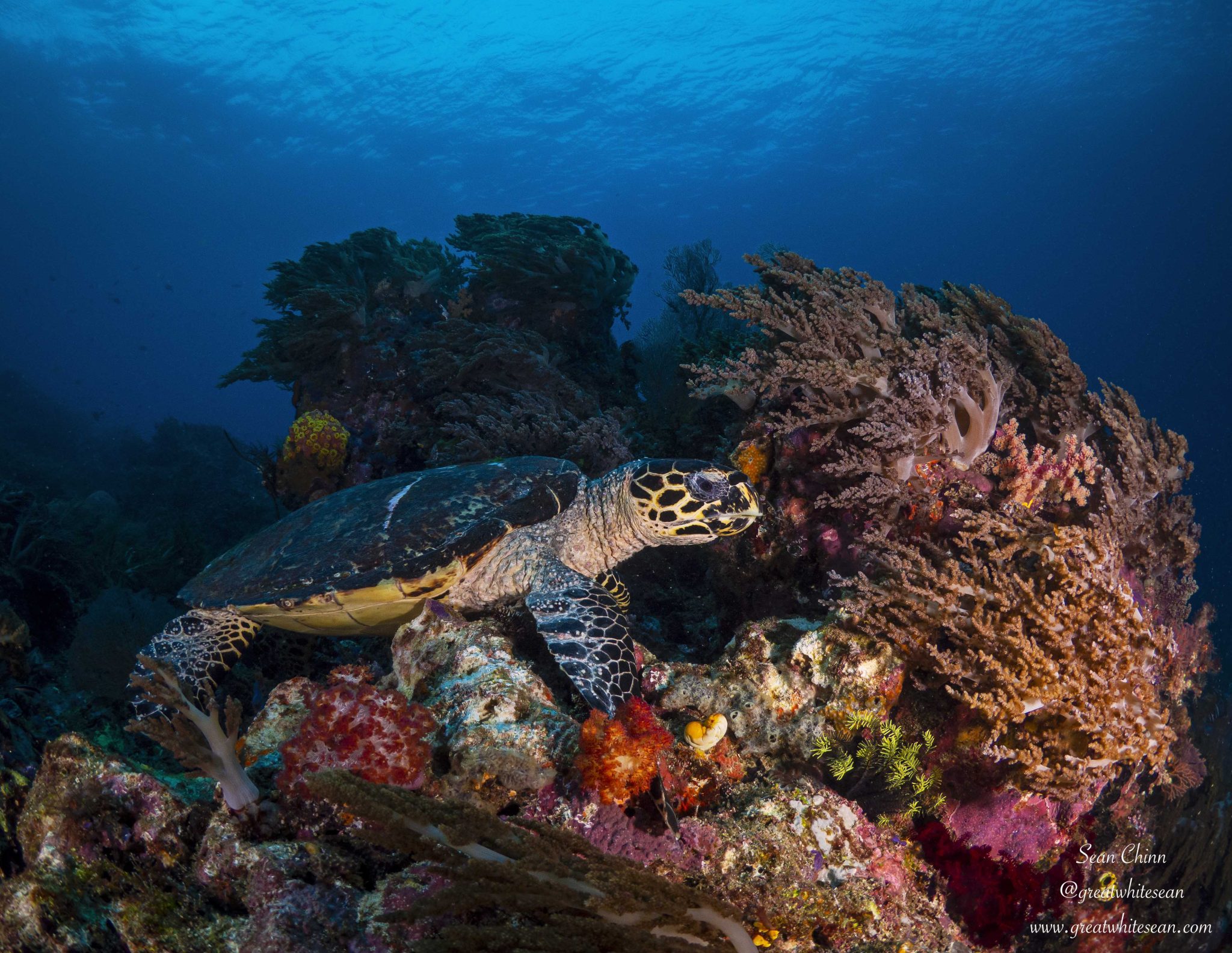News
Ultimate Raja Ampat – The Last Paradise (Part 2 of 3)
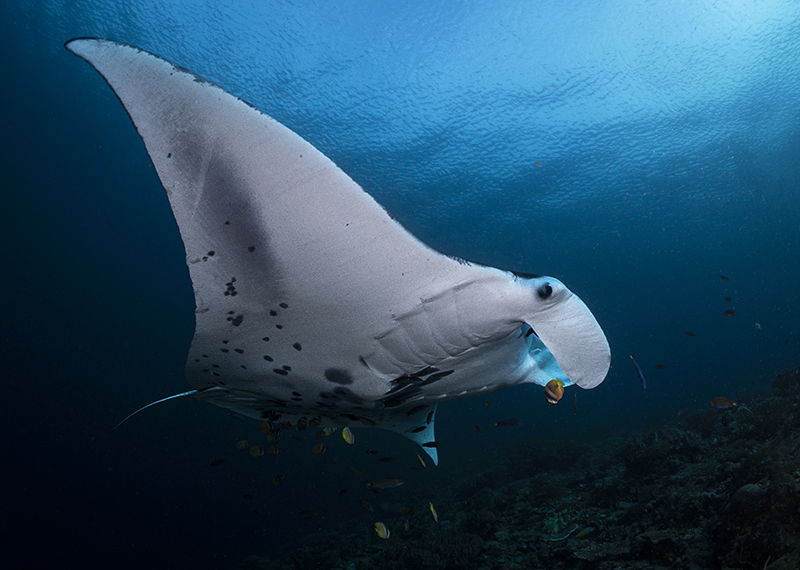
I’m hoping by now that you would have read the first part of my Ultimate Raja Ampat story with La Galigo Liveaboard. If not, then please check out Part 1 HERE. We really started with a bang and visited some incredible dive sites in the first few days. The amount of fish life seen on the dives was incredible and I could only hope the rest of the trip would continue to deliver.
I didn’t have to wait long before another unforgettable dive for the very first the next day. We were aiming for ‘Manta Ridge’ and as the name suggests, we were looking for the majestic manta rays. The anticipation was bursting as I love spending time with manta rays and the guides had already alluded to the fact they saw them on the current check. The current was strong and reef hooks were advised once we got to the ridge.
My group was the last in and as we worked our way along the ridge towards the cleaning station, it wasn’t long before a manta came into view. I managed to find a great spot to hook into and enjoyed the most amazing show. Stunning reef manta rays glided over my head within touching distance before hovering over the reef as they were cleaned thoroughly by black lip butterflyfish and other small fishes. This was how we spent most the dive at around only 10 metres before moving back along the ridge and shallowing up on top of the reef to hook in for our safety stop. HOWEVER, the best was yet to come for me personally, as I was reluctant to leave and dawdled behind the group, continually checking over my shoulder, until there it was…
This was what I was hoping to see on my trip to Raja and to be close enough to get a photo I was truly happy with. I’d seen black manta rays before, but never close enough for a decent photo, now suddenly the opportunity presented itself. I saw my group just metres away hook onto the reef at 5-6 metres and I felt protected from the worst of the current, as this majestic manta suddenly glided within just a couple of metres of me. I couldn’t believe the interaction I was getting and it felt like I was completely alone with it for this short moment. It glided along the reef while getting cleaned before circling a couple of times within touching distance. I just kept shooting and hoping the photos were coming out ok, while my adrenalin was pumping through my body for one of the best manta ray encounters I’ve had. Thankfully I was more than happy with the images I got and the memories were even greater.
It was only day four and I had already ticked off some real Raja Ampat bucket list moments. The pressure was certainly off but the day continued in style and showed the diversity of life here. After a second dive at Mayhem with numerous resting wobbegongs and an overly friendly hawksbill turtle, it was time to mix it up on the third dive and go small, really small. Raja Ampat is famous for pygmy seahorses, as it’s an incredible place for numerous healthy sea fans. I’d been advised you have the chance to see them on pretty much every dive, making it so hard to choose between macro and wide angle with the incredible choice here. For dive three though, I was advised Hippocampus bargibanti had been seen on the previous trip and I opted for macro. It didn’t disappoint and I was so happy to see the super cute bargibanti seahorses once again and have the chance to photograph them. Followed by one of my favourite critters no matter how many times I see them – the peacock mantis shrimp. I love it when a plan comes together!!
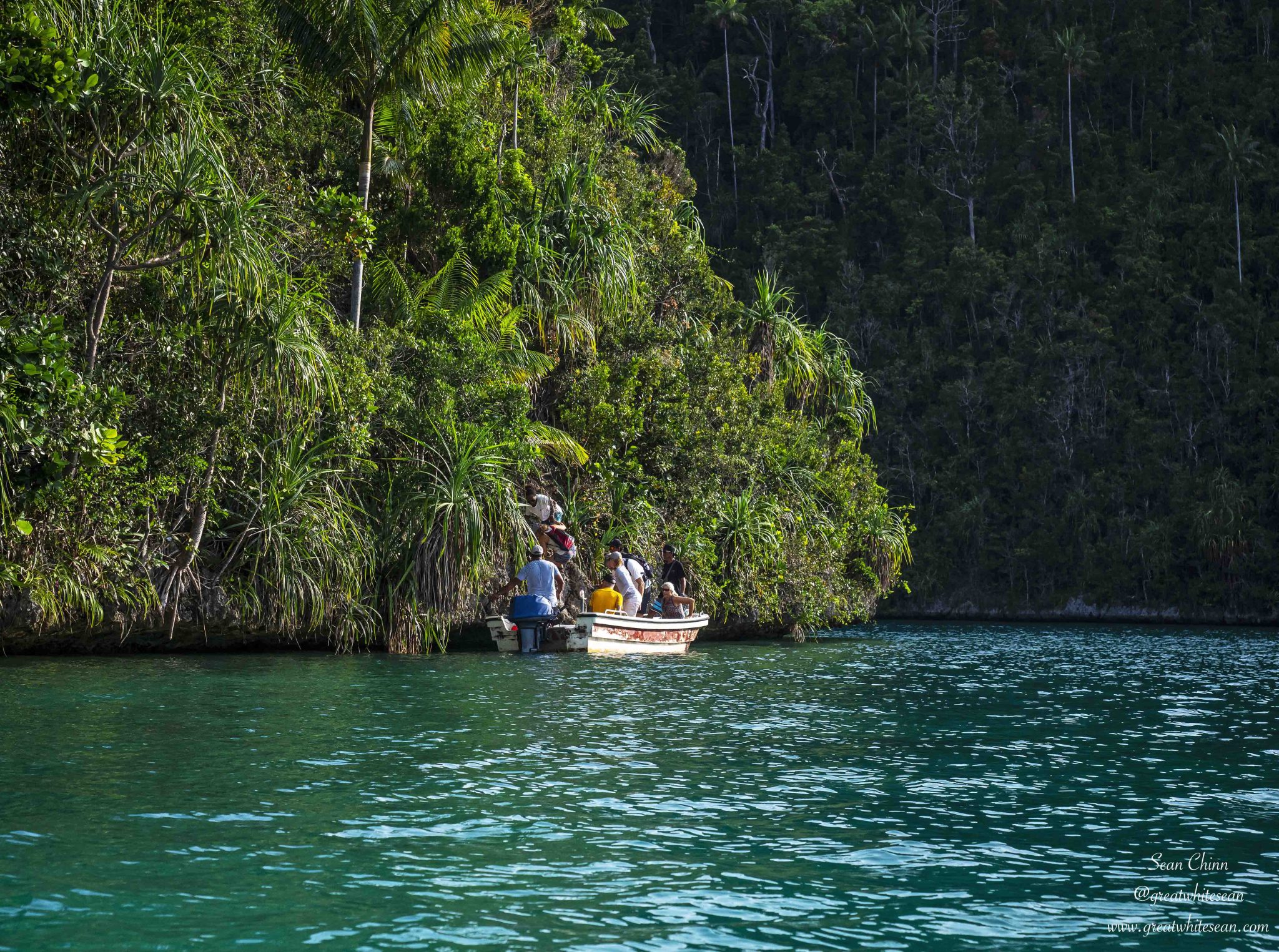
Wayag Lagoon trek was quite the adventure as we scrambled from the speedboats onto the limestone island
It was now time to head to the most northern part of the itinerary – Wayag. Famous for its stunning landscape and lagoon, I was really looking forward to mixing it up and taking a break from diving. Our first adventure of the day would be a trek up Wayag Lagoon instead of diving, although I couldn’t resist a quick swim with the blacktip reef sharks that were circling the boat before the trek.
The trek in itself was an interesting adventure. I wasn’t expecting it to be difficult and presumed it was stairs but I soon realised it wouldn’t be that easy. It made it much more fun though, as we navigated the footholds and scrambled up the formations in the limestone. The limestone can get quite sharp and you really have to have your concentration in check on this climb, but it is more than manageable for any fitness level if you take your time. It is only a short 20-minute hike but took longer due to being mesmerised by the incredible views with each step higher. One of the most stunning views I’ve been lucky enough to lay my eyes on. The different shades of blue of the glass like sea broken up by lush green rainforest covering the limestone islands. It’s so cliché to say “the view took my breath away” but there’s no other way to describe the scene.
Diving around Wayag was all about macro critters for me. Two more day dives followed where again nudibranch of all shapes, size and colour made appearances. Our guide Aghi was brilliant at finding the really small flabellina variety. Squat lobsters, crabs and shrimps were the crustaceans keeping me entertained before one of the best night dives ever. Terserah Point is a sloping white sand dive looking for the weird and wonderful. Bobtail squid were seen in great numbers and were another first for me, with a long arm octopus, cuttlefish and decorator crab also putting on a show before the grand finale. The charismatic coconut octopus dazzling with its colours and tentacle show, while trying its best to hide between two shells. Again, another first for me, which was becoming quite the norm on this trip. Even having a close call with a box jellyfish right at the end of the dive, it got the adrenalin going but again another cool critter to see and my first.
The next couple of days we started to head south again, as we were aiming for the area around Misool Island and the marine reserve. We stopped at Kawe, Aljuy and Penemu along the way and the dives were all about the stunning coral that Raja Ampat is famous for. While also trying to see manta rays again at Eagle Rock 1. Unfortunately, the dive didn’t deliver mantas, although it was a stunning site with hawksbill turtle, wobbegong and the only banded sea krait I saw on a dive on the trip. However, we just happened to be diving the wrong island at Eagle Rock and when we surfaced, we saw mantas from the boat and took the opportunity to swim with them as six swam past at the surface. One bigger manta continued to circle a coral pinnacle beneath us – enough for another manta fix!
The swim throughs at Wofoh South and Batu Rufus provided stunning photography opportunities with amazing topography. The dancing anchovy school mesmerised, and the coral formations were breathtaking on all dives, none more so than the beautiful Melissa’s Garden. This was a relaxing dive on top of some of the best hard coral gardens I’ve seen. Anthias danced in and out with Napoleon wrasse a constant sight throughout. It was also another amazing dive for nudibranch, quite the popular macro subject in Raja Ampat. Pianemo trek on the morning of day seven was again a welcome break from diving and something different to enjoy and see the amazing scenery from a vantage point. A much easier trek, as a well-maintained staircase leads you up to the viewpoint over the lagoon. Breathtaking views were waiting, while meeting local villagers and buying fresh coconuts provided welcome company from our liveaboard bubble.
While all these sites were truly special, it was again the night dive that stole the show for me. Another sloping white sand dive but this time at Wofoh North. Again, it was all about the weird and wonderful, as the guides alluded to it being a great place for wunderpus octopus. I was keeping my fingers crossed, as it was another new species for me to see and as it happened, I didn’t have to wait long into the dive. There it was, sitting perfectly still in the sand, no bigger than the palm of my hand and guess who found it? Yes!! That’s right! I was so excited to spot it in the sand myself, although it took me a second to make sure it definitely was an octopus. What an amazing dive this was for the whole 50 minutes. Another wunderpus was found, that was actually still in its larval stage; an amazing find. Spearing mantis shrimp, nudibranch, sea moths, bobtail squid, devil scorpionfish and more were just the tip of the iceberg on another amazing night dive.
This place just continued to deliver with its amazing biodiversity and it was now time to head south on a 16 hour crossing heading close to Misool Island. Stay tuned for our adventures on the final four days diving the south.
For more information about diving in Raja Ampat:
Whatsapp: +62 812 2000 2025
News
Book Review: Fire on Monroe Bravo by Fred Lockwood

Fire on Monroe Bravo is the latest book in the Jack Collier series by Fred Lockwood. Our story begins with our lead characters, Jack and Sandro, owners of Marine Salvage & Investigation Company, arriving on the Monroe Bravo Oil & Gas Platform in the North Sea. Having secured a contract for their vessel the MV Stavanger to act as support ship to the platform for TransGlobal Oil, our protagonists are on a celebratory visit.
However almost as soon as they arrive a series of explosions rock the platform, causing huge damage, loss of life and the very real danger of a massive human, ecological and financial disaster.

As the danger mounts for both our heroes and the surviving workers, Jack and Sandro will have to escape the inferno, all while trying to save the platform and the men still trapped unable to help themselves.
The disaster sets the scene for the unfolding story lines following the fate of the platform and our main characters, the police investigation into a suspected terrorist act and the actions of TransGlobal Oil as they attempt to navigate the pubic outcry and financial repercussions.
In his eighth book, Fire on Monroe Bravo, Fred Lockwood delivers an explosive thriller, with plenty of above and in-water drama, and our heroes fighting for survival, what more can you ask for?
We thoroughly recommend this read and look forward to the next in the series. For more information about his book series, you can check out the reviews of his previous books here on Scubaverse.
- Title: Fire On Monroe Bravo
- Author: Fred Lockwood
- ISBN: 979-8325324536
Available in a paperback version and for Kindle from Amazon and book stores.
Blogs
Alonissos: The complete diving destination (Part 1)

In June we were incredibly fortunate to be invited to dive in Alonissos, a small Greek Island in the Sporades island chain located in the North Aegean Sea. While I have long been a big fan of the Greek Islands as a great holiday destination, I had not had the opportunity to do any diving on previous visits and Mike and I were extremely excited to see what Alonissos had to offer both above and below the surface!

The Sporades are easily accessible via the airport in Skiathos (the first island in the chain), which is served by Jet2 flights from all major UK airports from May through October. Numerous ferries and charter boats make island hopping from Skiathos Town a breeze. After an hour boat ride, the picturesque port of Patitiri was a wonderful introduction to Alonissos, where we were met by our gracious hosts Kostas of Albedo Travel and Dias of Alonissos Triton Dive Center. Mike and I were delighted to be staying at the Paradise Hotel, aptly named for its stunning views over the sea and great location for walking to the waterfront.

Alonissos is beautifully situated in the National Marine Park of Alonissos and the Northern Sporades, the largest marine protected area in Europe. The surrounding seas offer fabulous marine life, including incredibly rare species such as the Mediterranean monk seal. They boast deep walls covered in gorgonians and sponges, stunning topography with caverns, swimthroughs and pinnacles, and the first accessible ancient shipwreck from 500BC!

In locations where historical sites have been reported, the waters are largely restricted, but with collaboration between government, underwater archeologists and dive centres, incredible underwater museums are being created for a truly unique diving experience. Alonissos is home to the first of these, the Ancient Shipwreck of Peristera Accessible Underwater Archeological Site. The chance to dive into history (along with reports of healthy reef life and amazing underwater topography) meant Mike and I were keen to get in the water.

Our introduction to the diving around Alonissos was at the Agios Georgios Pinnacles, in the channel between Alonissos and Skopelos. This fantastic site was named “The Chimney,’ and proved to have a huge amount to see. We got to a decent depth here (over 25m), and marvelled at a colourful reef wall with a wonderful swim through whose rocky walls were absolutely covered with life. As well as brilliant topography there was no shortage of macro life here. We saw numerous nudibranchs, five different species in total. The second dive at Mourtias reef nearby was a shallower dive along a nice wall with lots of crevices. Several moray eels and grouper called this site home. We enjoyed looking in the crevices for lobster and smaller benthic life, such as cup corals and tunicates.

Our itinerary allowed us two dives a day with afternoons left to explore the island with our hire car and evenings to enjoy the famous Greek hospitality. This proved to be a lovely mix of in-water and land based diversions.

The next days diving to the Gorgonian Gardens and Triton’s Cave was to be even better! These two stunning sites are nothing short of fabulous. The Gorgonian Gardens was a deep wall near to the Agios Georgios islands. The ever-present currents in this deep channel meant that the sea life was amazing … the namesake Gorgonian sea fans dotted the wall at a depth of 30 to 50 meters, getting ever larger the deeper we went. Above 30m was by no means less beautiful, with sponges, corals, scorpionfish, moray eels and some rare and colourful nudibranchs.

The second shallower dive of the day was to Triton’s Cave or the Cavern of Skopelos, on the east side of that island. The spectacular rock formations had wild striations both above and below the water making a truly epic topography. The cavern entrance was at 14m, and big enough for a buddy pair, winding up to 6m and passing two beautiful windows out into the blue. Emerging from the cavern, the light at the shallower depths and the incredible rock formations made for a fantastic gentle swimming safety stop and we all surfaced by the boat with massive grins.

Check out our next blog :Alonissos: The complete diving destination (Part 2)” to hear about our amazing dive on the 2500 year old Peristera Wreck!
Thanks to:
Alonissos Triton Dive Center https://bestdivingingreece.com/
Albedo Travel https://alonissosholidays.com/activities/
Paradise Hotel https://paradise-hotel.gr/
Alonissos Municipality https://alonissos.gr/en/
-

 Blogs2 months ago
Blogs2 months agoDiving With… Nico, Ocean Earth Travels, Indonesia
-

 News1 month ago
News1 month agoMurex Bangka Announce New Oceanfront Cottages & Beachfront Dining
-

 Blogs2 months ago
Blogs2 months agoA new idea in freediving from RAID
-

 Marine Life & Conservation1 month ago
Marine Life & Conservation1 month agoIceland issue millionaire whale hunter a licence to murder 128 vulnerable fin whales
-

 Marine Life & Conservation2 months ago
Marine Life & Conservation2 months agoThe Shark Trust Great Shark Snapshot is back
-

 News3 months ago
News3 months agoCharting New Waters; NovoScuba Goes Global with the Launch of their Revolutionary Dive Training Agency!
-

 Gear News1 month ago
Gear News1 month agoNew Suunto Ocean – a dive computer and GPS sports watch in one for adventures below and above the surface
-

 Marine Life & Conservation Blogs2 months ago
Marine Life & Conservation Blogs2 months agoBook Review: Plankton



